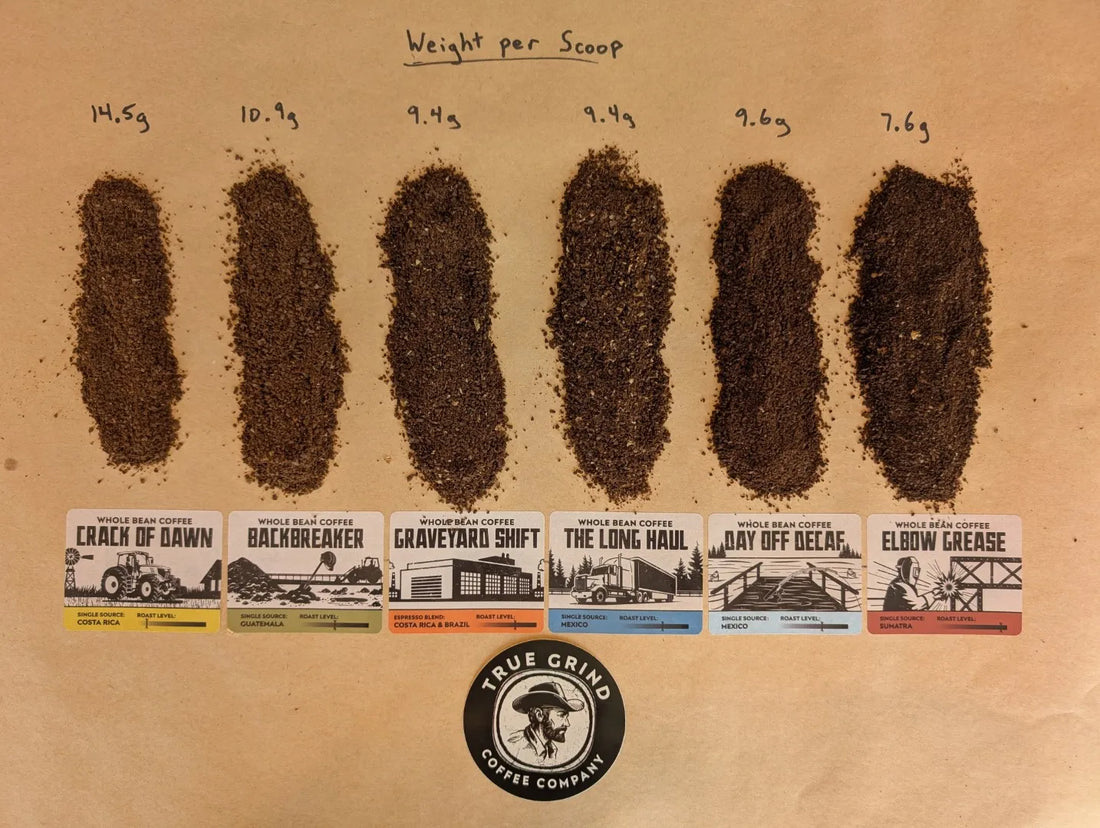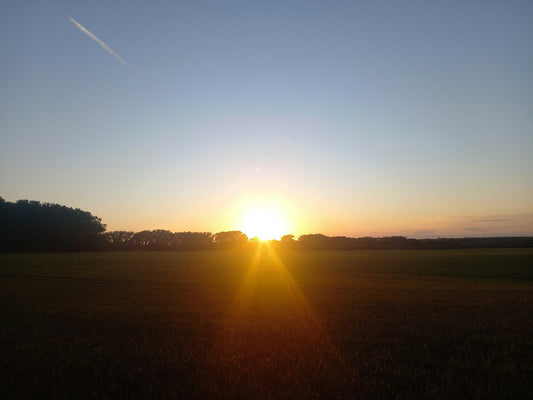
Unlocking the Secret to a Better Brew: Let's Talk Coffee Density
Share
We all want that perfect cup of coffee from our own kitchen. Turns out, understanding a key characteristic of your beans – their density – can make all the difference.
Now, density might sound like a technical term, but it really just describes how compact each coffee bean is. Think of it like the difference between a ping pong ball and a golf ball – both might take up a similar amount of space, but the golf ball (the denser one) packs a lot more material into it. With coffee, denser beans contain more of those flavorful compounds within their structure, which can ultimately impact your brew.
So, why does density matter for your brewing? When you pour hot water over your coffee grounds, you're essentially trying to unlock those delicious flavors. While the same weight of different density beans will generally give you a similar brew strength, the key difference lies in the amount of beans you'll need to reach that weight. Imagine you're aiming for 20 grams of coffee. If you have denser beans, you'll need fewer of them to hit that 20-gram mark compared to less dense beans. Factors like where the beans come from – higher altitudes often lead to denser beans – how they were processed after being harvested, how long they were roasted, and even the specific type of coffee plant all play a role in determining a bean's density. Understanding these factors can give you a better sense of how a particular coffee might behave when you brew it.
The Scale vs. The Scoop: Achieving Consistency in Measurement
When it comes to measuring your coffee, precision is crucial for a consistent brew. While using a scoop might seem like the easiest method, it can introduce some variability. The amount of coffee that fits into a scoop can change depending on how dark they are roasted and how finely you grind them. A scoop of our light roast Crack of Dawn will weigh more than the same scoop of our dark roast Elbow Grease. Even just how full you make that scoop can affect the consistency.
For the most reliable results, we highly recommend using a digital kitchen scale to measure your coffee in grams. This ensures you get the same amount every time, allowing for precise coffee-to-water ratios, which is essential for optimal extraction.

A digital kitchen scale makes quick work of measuring coffee grounds and water.
Your Guide to the Perfect Brew: We've Done the Work for You
At True Grind Coffee Co., we are dedicated to helping you brew the most delicious coffee possible. If you prefer to use a scoop for convenience (or find yourself without a scale handy), we have measured the density of all our coffee roasts. Using this information enables you to measure your coffee by volume as accurately as possible.

An Agtron is an instrument used to quantify coffee bean roast level (the higher the number, the lighter the roast).
The generally recommended starting point for brew strength is about 60 grams of coffee for every liter of water. “Standard” coffee scoops often hold about 2 tablespoons of ground coffee. To assist you, we have compiled a guide below that shows you approximately how many scoops of coffee you would need to get close to that 60-gram mark (using a typical medium grind for drip or pour-over). This is a great starting point for brewing a liter of coffee, and you can always adjust it depending on the quantity you are making and your desired strength.
| True Grind Roast | Roast Level | Agtron Roast Level | Coffee Scoops per 60 g | Weight per Scoop (grams) |
| Crack of Dawn | Light | 71.1 | 4.1 | 14.5 |
| Backbreaker | Light-Medium | 68.9 | 5.5 | 10.9 |
| Graveyard Shift (Espresso Blend) | Medium | 63.5 | 6.4 | 9.4 |
| The Long Haul | Medium-Dark | 60.7 | 6.4 | 9.4 |
| Day Off Decaf | Medium-Dark | 53.8 | 6.3 | 9.6 |
| Elbow Grease | Dark | 45.1 | 7.9 | 7.6 |
The "Coffee Scoops per 60 g" column indicates approximately how many scoops you will need to measure out approximately 60 grams of grounds for that specific coffee.
The "Weight per Scoop" column offers an estimate of how much each scoop of that coffee weighs in grams.
Here are a few ways you can use this information:
- Accurate Volume Measurement for Our Coffees: If you want the most accurate way to measure our specific True Grind Coffee products by volume using a scoop, this table provides the data you need. This helps you get a consistent amount of your favorite roast.
- A Starting Point for Any Coffee: Don't have a scale and brewing a different coffee? You can use this table as a general starting guideline for any coffee with a similar roast level to our offerings. Keep in mind that this is an estimate, as density can vary between different coffee beans.
- Switching Between Coffees: If you know how many scoops of one coffee roast you typically use and you are trying another one, you can use the relative values to get a good starting point. For instance, if you use 4 scoops of our Costa Rica for your daily brew, and you are switching to our Sumatra, you might start with around 7 or 8 scoops to achieve a similar strength.
Remember, the perfect cup is all about what tastes best to you. Use these numbers as a guide, and do not hesitate to experiment! If your coffee tastes a little weak, add a bit more grounds next time. Too strong? Use a little less.
General Rules of Thumb: When You're Brewing Other Coffees
If you do not have our specific density data or you are brewing other fine coffees, here are some general guidelines for a 1-liter brew based on roast level. Keep in mind, these are just estimates, and what tastes best is always up to you and the specific beans.
- Light Roasts (like our Crack of Dawn): Aim for about 4 level scoops of grounds per liter of water.
- Medium Roasts (think Backbreaker or The Long Haul): Try around 6 level scoops per liter.
- Dark Roasts (like our Elbow Grease): Go for about 7-8 level scoops per liter.

Comparing the density of grounds for various roasts.
Regardless of the roast, keep in mind that how finely you grind your coffee also makes a difference. Finer grinds pack more densely, so you might need to adjust your volume slightly.
Summary
Understanding coffee bean density, and how it is influenced by its origin and roast level, is a significant step towards improving your home brewing. While a scale provides the most precise measurements, this guide offers practical measurements for using scoops, whether you need exact data, a general guideline, or help switching between our roasts. And even if you are brewing other coffees, those guidelines based on roast level can provide a helpful starting point. Just remember that grind size also plays a role. So, go ahead, experiment a little, find that perfect coffee-to-water ratio that suits your taste, and enjoy your brew!
For more coffee tips and updates from True Grind, be sure to join our mailing list below!




